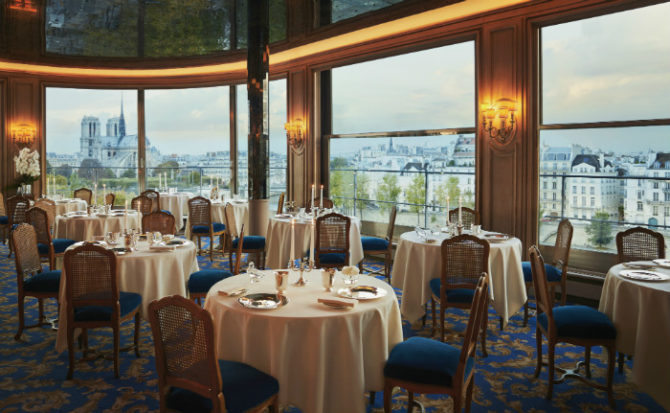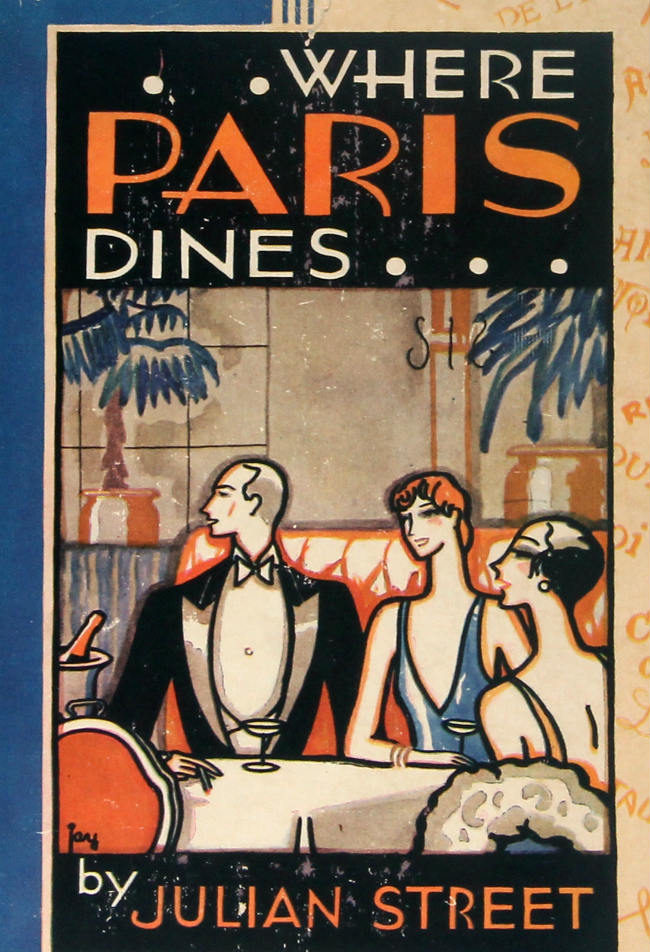Where Paris Dines: Julian Street’s Epic 1929 Restaurant Guide


- SUBSCRIBE
- ALREADY SUBSCRIBED?
BECOME A BONJOUR PARIS MEMBER
Gain full access to our collection of over 5,000 articles and bring the City of Light into your life. Just 60 USD per year.
Find out why you should become a member here.
Sign in
Fill in your credentials below.
Let me set the stage: Paris 1929. The third Republic was in power in France led by Gaston Doumergue. The Maginot Line, fortifications built along the borders of Switzerland and Germany, were under construction, assuaging fears of WWII. The Monaco Grand Prix races of the Formula One began on the French Riviera. The Surrealist artist Salvador Dali moved to Paris and influenced Pablo Picasso with his painting style. Coco Chanel was at the top of the fashion world rivaled by the House of Lanvin (the oldest fashion house still in business). Django Reinhardt, one of the greatest guitarists of all time, created Gypsy-Jazz. Josephine Baker, the wildly popular singer-dancer made headlines with her famous risqué Banana Dance at the Folies Bergère. Jean Cocteau, writer, designer and wit wrote Les Enfants Terrible. Marcel Pagnol, the beloved French novelist and filmmaker, wrote Marius. And, center stage for the purposes of this article, was Julian Street: American author, reporter, dramatist, travel writer, gourmet, and art critic. He wrote of Marcel Duchamp’s Nude Descending a Staircase, …”it resembles an explosion in a shingle factory.”
Julian Street combined almost all of his singularly creative talents in 1924 when he published the original, Where Paris Dines. On my bookshelf at home I have a first edition– published in London in 1929. While tediously dusting one day, I opened the first few pages and read: “With information about restaurants of all kinds, costly and cheap, dignified and gay, known and little known and how to enjoy them.” I sat down with the book and looked at the frontispiece which has a quote by the transcendental gastronomer, Brillat-Savarin:
“L’homme mange, l’homme d’esprit sait manger.” Translated it means that all men eat, it is something natural that anyone can do, but the man who has a great mind knows how to eat properly, that is to say, the best, refined food and drink, of course. I thought it would be fascinating to research how many of the restaurants listed in the book still remain open, 86 years later. For selecting the restaurants, Street considered these factors: cooking, wine cellar, service, setting, prices and tradition. I have just considered whether they have survived and thrived in the same location.
Street wrote, “No favors were given to him and no money exchanged hands.” He chose the restaurants for the sheer pleasure of giving everyone who read his book the opportunity to eat a good meal in the French capital. Unfortunately, I have not eaten in most of the restaurants I’ve listed, but I offer you a sampling opportunity to choose a place to dine (historical tidbits included when found) where location has been, truly, everything. “The eating places of Paris will delight the visitor from the U.S. and Great Britain in exact ratio to the subtlety of his palate, the strength of his digestion and his ability to disaccord the alimentary traditions of his homeland and accept the ways of France.” Bon courage and bon appétit!
Six Restaurants Beyond Compare
There is one out of 16 whose doors are still open. Tour d’Argent, 15 Quai de la Tournelle. Dates from 1582, the oldest eating place in Paris; opened its doors 76 years after the death of Columbus. The fork was first introduced there and it’s where Dumas conceived his famous story, The Three Musketeers.
Eighteen Distinguished Restaurants
L’Escargot, 38 rue Montorgueil. Opened in 1884. The signing of the Treaty of Versailles (one of the treaties that ended WWI) was celebrated here over dinner.
Lapérouse, 51 Quai des Grands Augustins. Founded 1888. Favorite spot of author, Robert Louis Stevenson who wrote Treasure Island and The Strange Case of Dr. Jekyll and Mr. Hyde among many others.
La Crémaillére, 15 place du Tertre. Established 1900 as a shop, opened as a restaurant in 1925.
Drouant – 18 rue Gaillon. 1880. Where the Conseil des Dix met to decide the Prix Goncourt, a prize in French literature, given by the académie Goncourt to the author of the best and most imaginative prose work of the year.
Laurent – Avenue Gabriel, Carré des Champs-Élysées. 1867. Patronized by the American Embassy.
Ledoyen, 8 Champes Élysées. 1808. Frequented by the Duc de Moray and La Paiva, the most successful 19th century French courtesan. Today helmed by Michelin three-starred chef Yannick Alléno.
Les Grands Café des Capucines – 4 Boulevard des Capucines, Opéra. 1875. Opened at the same time as the L’Opéra designed by Garnier.
La Maison de la Trouffe – 11 rue Taitbout. 1929. Known for its truffle dishes and Quercy region foie-gras.
Good restaurants of the Middle Class
Drouant – 18 rue Gaillon. 1880
Le Petit Chaise – 36 rue de Grenelle. 1681.
Chez Francis – 7 Place d’Alma. 1880.
Auberge du Clou – 30 Avenue Trudaine. 1883
Auberge du Père Louis – 7 rue de la Boule Rouge. 1903.
Gaulclair – 96 rue Richelieu. 1810
Au Petit Riche – 25 rue le Peletier. 1870
Gay Restaurants with Dancing, Entertainment or Both
Pré Catelan – Bois de Boulogne. 1908.
Boeuf sur la Toit – 26 rue Penthievre. 1921.
Maxim’s – 3 rue Royale. 1893. Most famous in films and as a symbol of nocturnal dissipation.
Russian Restaurants
None left, originally 7.
Summer Restaurants
Auberge de la Bonne Franquette – 2 rue des Saules. 1850.
Pré Catelan – Bois de Boulogne. 1908.
Restaurants Near the Markets and the Abattoirs
Pharamond – 24 rue de la Grande Truanderie. 1840.
La Père Tranquille – 16 rue Pierre Lescot. 1829. Oldest near the 12th century Les Halles markets.
Dagorno – 190 Avenue Jean Jaurès. 1863.
Restaurants that Specialize in Seafood
Prunier – 9 rue Duphot. 1872.
Some Picturesque Oddities
Mosquée – 51 rue Geoffroy St. Hilaire. 1922.
Cafés and Brasseries
Café de la Paix – 12 Boulevard des Capucines. 1862.
Brasserie Lorraine – Place des Termes. 1860.
Café du Dôme – 108 Boulevard du Montparnasse. 1900.
La Coupole – 100 Boulevard du Montparnasse. 1920.
Café de la Rotonde – 105 Boulevard du Montparnasse. 1911.
Le Select – 99 Boulevard du Montparnasse. 1927.
La Corazza – 25 rue de Richelieu. 1782.
La Procope – 13 rue de la Ancienne Comédie. 1675. The first café in Paris and arguably the most famous historically. Haunted by D’Alambert, Diderot, Rousseau, Voltaire, and then revolutionists Marat, Danton, Desmoulins and Robespierre. The young Napoléon Bonaparte socialized there as well as some of Paris’s literati: Balzac, Dumas, Georges Sand, Verlaine, Anatole France and Oscar Wilde.
Note: Some restaurants and cafés were omitted by Julian Street which you may already be familiar with as important to the Parisian gastronomic and historical lexicon.
Lead photo credit : Courtesy of Le Tour d'Argent









